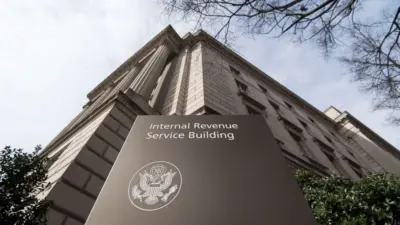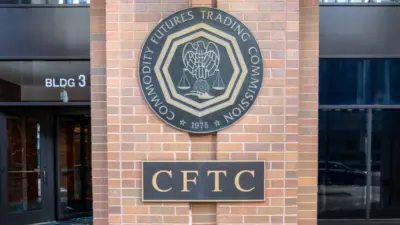In 2025, crypto regulations will be at the forefront of discussions, shaping the way investors and developers interact with this dynamic industry.
- 1 The State of Crypto Regulations in 2025
- 2 Key Areas of Focus in 2025 Crypto Regulations
- 3 Challenges for Investors Navigating Crypto Regulations
- 4 Opportunities for Investors and Developers In 2025
- 5 Best Practices for Investors and Developers to Maintain Compliance
- 6 The Role of Governments and Regulatory Bodies in Shaping Crypto’s Future
- 7 The Future Outlook: Crypto Regulations in 2025 and Beyond
- 8 Conclusion
The State of Crypto Regulations in 2025
Global Regulatory Landscape
The regulatory framework for cryptocurrencies in 2025 highlights a maturing global approach with significant differences across regions:
- United States: The United States has taken a more structured approach to crypto, distinguishing between securities and commodities. The SEC and CFTC have increased oversight, while stablecoins are governed by specific federal frameworks.
- European Union: The European Union (EU) leads with the Markets in Crypto-Assets Regulation (MiCA), which standardizes rules across member states while emphasizing transparency, investor protection, and environmental sustainability.
- Asia: Countries like Singapore and Japan maintain pro-crypto stances, with balanced regulations that encourage innovation. In contrast, China continues to crack down on decentralized currencies while exploring CBDCs.
In 2025, governments will prioritize comprehensive crypto governance:
- Security: More rigorous rules on cybersecurity for exchanges and wallet providers aim to reduce hacking threats.
- Privacy: Maintaining user privacy while meeting anti-money laundering (AML) and Know Your Customer (KYC) requirements remains a top priority.
- Taxation: Tax reporting standards have tightened, with international collaborations such as the OECD’s Crypto-Asset Reporting Framework (CARF) gaining prominence.
- Consumer Protection: Regulators implement measures to prevent fraud and educate investors about crypto risks.
Upcoming Changes
Several important regulatory frameworks are set to shape the industry:
- Global Tax Frameworks: In 2025, international tax standards, such as CARF, will go into effect, requiring more detailed reporting of cross-border crypto transactions.
- Stablecoin Regulations: Countries such as the United States and the European Union are expected to impose strict rules governing stablecoin reserves and transparency.
- DeFi Oversight: Governance measures for Decentralized Finance (DeFi) platforms, such as KYC compliance and on-chain transaction monitoring, are becoming more prevalent.
- Environmental Policies: With a growing focus on sustainability, governments are enacting carbon-neutral mandates for blockchain projects that use proof-of-work mechanisms.
The regulatory landscape of 2025 reflects a dual effort to ensure crypto’s growth while mitigating its associated risks, indicating a pivotal year for the industry.
Key Areas of Focus in 2025 Crypto Regulations
Taxation and Reporting Requirements
In 2025, tax regulations will be an essential component of crypto governance.
- Enhanced Tax Reporting: Governments around the world have adopted frameworks such as the OECD’s Crypto-Asset Reporting Framework (CARF), which requires detailed reporting on crypto transactions. Platforms and wallets must now automatically share transaction information with tax authorities.
- Investor Accountability: Crypto investors face stricter requirements to declare gains and losses, with penalties for noncompliance growing.
- Developer Impacts: Taxation affects blockchain developers in terms of token issuance and project funding, ensuring transparency in tokenomics.
Security and Compliance Standards
Robust security and compliance measures dominate regulatory efforts to protect the industry:
- AML/KYC Standards: Platforms must implement advanced Know Your Customer (KYC) and Anti-Money Laundering (AML) procedures to prevent illegal activities.
- Smart Contract Audits: To reduce vulnerabilities, crypto regulations now require independent audits of smart contracts.
- Infrastructure Hardening: Exchanges and custodians must strengthen cybersecurity, with regulatory bodies auditing their protocols on a regular basis.
Consumer Protection
In 2025, crypto regulations prioritize consumer safety to boost trust in retail users.
- Fraud Prevention: Governments implement stricter anti-fraud measures, penalizing deceptive projects and scams.
- Transparency requirements: Platforms must disclose the risks associated with crypto investments and provide users with comprehensive educational resources.
- Insurance Mandates: Custodial services now require insurance against hacks, ensuring that consumer funds are protected.
Cross-Border Regulations
The global nature of crypto creates challenges for regulatory consistency:
- International Collaborations: Organizations such as the Financial Action Task Force (FATF) work to standardize cross-border crypto regulations, particularly for AML compliance.
- Jurisdictional Disparities: Variations in tax rates, token classifications, and compliance standards continue to cause uncertainty for global investors.
- Opportunities For Developers: Inconsistent rules allow developers to base operations in crypto-friendly hubs such as Singapore or Switzerland.
By focusing on these critical areas, the 2025 crypto regulations aim to strike a balance between innovation, user protection, and global collaboration.
Regulatory Uncertainty
The dynamic and fragmented nature of crypto regulations causes confusion and complexity for investors:
- Inconsistent Rules: Crypto regulations differ significantly across countries, making it difficult for investors managing cross-border portfolios to stay compliant.
- Frequent Updates: Investors are struggling to keep up with the rapid pace of regulatory changes, which could expose them to noncompliance risks.
- Gray Areas: Undefined or ambiguous laws, particularly those governing decentralized finance (DeFi) and non-fungible tokens (NFTs), raise questions about legality and tax obligations.
Compliance Costs
Investors face financial and operational challenges in meeting compliance requirements:
- Increased Reporting Obligations: New tax laws in 2025 require detailed reporting of crypto holdings and transactions, which can be resource-intensive.
- Hiring Expertise: Investors may need to hire legal and tax professionals to navigate complex regulations, which increases costs.
- Technology Investments: Portfolio tracking and compliance management tools, such as automated tax calculators, can be costly for small investors.
Legal risks
The evolving regulatory environment poses significant legal challenges:
- Penalties for Non-Compliance: Unintentional violations of laws, such as failing to report income or complying with anti-money laundering (AML) standards, can result in significant fines or legal action.
- Fraudulent Projects: When investors unintentionally participate in unregulated or scam projects that do not meet regulatory standards, they risk facing legal consequences.
- Asset Seizure Risks: Some jurisdictions are enacting stricter enforcement measures, such as asset freezes or confiscation, for non-compliant crypto transactions.
Market Volatility Due to Crypto Regulations
Uncertainty around upcoming laws frequently causes market fluctuations:
- Investor Sentiment: Announcements of stricter crypto regulations or bans in key markets can trigger panic selling, affecting portfolio performance.
- Operational Delays: Compliance issues for crypto businesses can slow the launch of new products and services, reducing investor returns.
To navigate these challenges, a proactive approach is required, such as staying up to date on regulatory updates, utilizing compliance tools, and consulting experts to mitigate risks.
Opportunities for Investors and Developers In 2025
Emerging Markets and Innovation
Regulatory clarity in 2025 is opening up new opportunities, particularly in emerging markets:
- Market Expansion: Blockchain technology is becoming more widely adopted in Asia, Africa, and Latin America, creating previously untapped investment opportunities. For example, regulatory frameworks enable secure and transparent digital payment systems for the unbanked.
- Tokenization of Assets: Clearer crypto regulations for tokenized assets such as real estate, art, and commodities open up new opportunities for both investors and developers to explore innovative financial products.
- Sustainable Finance Initiatives: Green crypto projects that use blockchain for environmental sustainability are gaining traction as governments encourage eco-friendly investments.
Blockchain and Crypto Product Development
For developers, crypto regulatory advancements in 2025 provide a strong foundation for innovation and growth:
- Compliance-Friendly Solutions: Developers can create tools and platforms that meet evolving KYC/AML and taxation requirements, such as automated reporting systems.
- Decentralized Finance’s (DeFi) Evolution: With stronger consumer protection regulations, developers can create secure, user-friendly DeFi platforms that will gain mass adoption.
- Integration with Traditional Finance: The regulatory acceptance of hybrid systems allows developers to bridge the gap between blockchain and traditional financial institutions, such as integrating blockchain-based remittance services with banks.
Partnerships and Collaborations
Collaborating with regulatory bodies and established institutions opens up opportunities for both innovation and trust-building:
- RegTech Collaborations: Developers can work with regulatory technology companies to create compliance-as-a-service platforms for crypto businesses.
- Institutional Involvement: Investors benefit from partnerships with banks and financial institutions to launch crypto services, which provide credibility and market stability.
- Policy Co-Creation: Developers and industry leaders who collaborate with policymakers can help shape practical crypto regulations while encouraging innovation.
Capitalizing on these opportunities allows investors and developers to drive growth in the crypto ecosystem while remaining compliant and meeting user needs.
Best Practices for Investors and Developers to Maintain Compliance
Staying Informed
Keeping up with regulatory changes is critical for navigating the evolving crypto landscape:
- Reliable Resources: Subscribe to official government publications, legal advisories, and crypto industry newsletters for up-to-date information on new policies.
- Global Perspectives: Cross-border investors and developers benefit from tracking international regulations, which ensures compliance across multiple jurisdictions.
- Community Engagement: Participate in blockchain forums and conferences to discuss regulatory trends and share your thoughts with others.
Working with Legal Experts
Legal expertise is critical for interpreting and complying with complex crypto regulations:
- Regulatory Guidance: Work with crypto-focused lawyers and compliance consultants to understand the laws affecting investments and product development.
- Tailored Advice: Professionals can offer tailored advice on tax reporting, anti-money laundering (AML) compliance, and risk mitigation.
- Dispute Resolution: Legal experts can represent and protect the interests of investors and developers during regulatory audits or legal conflicts.
Adopting Compliance Tools
Technology can simplify compliance while lowering the risk of errors:
- Portfolio Trackers: Platforms such as CoinTracker and Koinly help investors track transactions and report taxes automatically.
- AML and KYC Solutions: Developers can incorporate Know Your Customer (KYC) and Anti-Money Laundering (AML) tools into crypto applications to meet regulatory requirements.
- Smart Contract Audits: Use auditing services to ensure that blockchain-based applications are secure and compliant before they are launched.
Proactive Compliance Measures
- Documentation: Keep detailed records of all transactions, including trades, transfers, and staking rewards, to meet reporting requirements.
- Education and Training: Both investors and developers should prioritize continuous education about best practices in compliance and risk management.
- Collaboration With Authorities: Engage with regulators during the development of crypto products to ensure compliance with emerging laws and foster trust.
Investors and developers can successfully navigate the complexities of 2025 crypto regulations by staying informed, seeking professional guidance, and adopting advanced compliance tools while reducing legal risks and promoting innovation.
The Role of Governments and Regulatory Bodies in Shaping Crypto’s Future
Government Initiatives
Governments are playing an important role in shaping the future of crypto through active projects and crypto regulations:
- Central Bank Digital Currencies (CBDCs): Central bank digital currencies (CBDCs) are being developed by governments globally, including China’s digital yuan and the EU’s digital euro.
- Implications: CBDCs seek to provide secure, regulated digital currencies while challenging decentralized cryptocurrencies.
- Impact on Crypto: CBDCs may increase competition for existing cryptocurrencies while demonstrating the feasibility of blockchain technology.
- National Regulations:
- Countries such as the United States and the European Union are implementing frameworks such as MiCA (Markets in Crypto-Assets) to standardize crypto governance, with an emphasis on security, taxation, and consumer protection.
- Emerging markets in Asia and Africa are using crypto regulations to increase financial inclusion while also encouraging innovation.
Collaboration of Regulators and Crypto Companies
To balance innovation and compliance, regulatory bodies and crypto firms must engage in dialogue:
- Regulatory Sandboxes: Governments in Singapore and the UK provide sandbox environments for crypto firms to test their solutions under regulatory oversight.
- Benefits: Sandboxes provide a controlled environment for innovation, ensuring that new technologies meet legal requirements without stifling creativity.
- Public-Private Partnerships:
- Cooperation between crypto companies and regulatory bodies ensures practical regulations that align with industry realities.
- Blockchain associations, for example, work closely with regulators to develop policies that protect users while encouraging innovation.
- Standardizing Compliance: Collaboration promotes universal compliance standards, especially for AML and KYC protocols.
Promoting Trust and Stability
- Regulatory Clarity:
- Clear government guidelines boost investor and developer confidence in the crypto market.
- Consumer Protection: Regulatory oversight protects crypto users from fraud, scams, and other risks.
Governments and regulatory bodies will continue to play important roles in the evolution of crypto.
They aim to strike a balance between innovation, compliance, and consumer protection through initiatives such as CBDCs and by fostering collaboration with industry players, laying the foundation for a sustainable future.
The Future Outlook: Crypto Regulations in 2025 and Beyond
Regulatory Predictability
In 2025, regulatory frameworks are expected to mature, bringing stability to the crypto ecosystem:
- Standardized Regulations: Global bodies, such as the Financial Action Task Force (FATF), may develop uniform guidelines to ensure compliance standards are consistent across borders.
- Example: The EU’s MiCA framework could stimulate similar adoption in other regions, providing investors and developers with greater predictability.
- Clarity in Taxation and Compliance: Clearer taxation and compliance policies will reduce confusion in the crypto market. This will help both individual investors and businesses plan their financial strategies more effectively.
Impact on Innovation and Market Growth
Crypto regulations, while imposing certain boundaries, can also foster innovation:
- Enhanced Credibility: Transparent and predictable rules can attract institutional investors, resulting in increased market capitalization.
- Incentives for Compliance: Governments may provide incentives, like reduced taxes or simplified licensing, to encourage the development of compliant crypto platforms and blockchain projects.
- Tech-Driven Growth: Blockchain use cases such as tokenized assets, decentralized finance (DeFi), and smart contract automation could benefit from regulatory predictability.
- AI and machine learning may also seamlessly integrate with crypto to improve security, scalability, and usability.
Long-term Effects on Global Crypto Adoption
As crypto regulations stabilize, global crypto adoption is expected to increase significantly.
- Wider Institutional Adoption: Clearer crypto regulations will encourage institutional players like banks and asset managers to enter the crypto space.
- This could result in the creation of new investment products, such as regulated crypto ETFs and mutual funds.
- Increased Retail Participation: Simplified compliance and consumer protection measures will make crypto more accessible to everyday users, leading to broad adoption.
- Financial inclusion initiatives will provide significant benefits to emerging markets in Africa, Southeast Asia, and Latin America.
- Global Economic Integration: Cross-border crypto regulations will improve crypto-system interoperability, facilitate international transactions, and create a global financial ecosystem.
The future of crypto regulations in 2025 and beyond depends on striking a balance between innovation and oversight.
Predictable and equitable regulatory frameworks will not only stabilize the market but also serve as a catalyst for innovation, adoption, and global integration of blockchain technology.
Conclusion
While the path to crypto regulatory clarity presents challenges, it also opens up enormous opportunities for growth and innovation.
A balanced approach to regulation not only ensures a safer crypto environment but also fosters trust between users and institutions. By addressing these regulatory complexities, the crypto industry can move closer to mainstream adoption and long-term viability.



